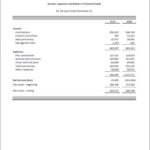Please call 410-399-9518 to learn more.
Content

If you are having trouble seeing or completing this challenge, this page may help. Versapay is an Elavon Payments Partner & Registered Partner/ISO of Elavon, Inc. But, you’ll want to do everything in your power to prevent receivables from becoming uncollectible before things get to that point. See immediately https://kelleysbookkeeping.com/ preceding endnote for other reasons as to why these balances can differ. End-to-end Financial Close Automation to enable day-zero close with close task and project templates, automated workflow and close task management. Structured Query Language is a programming language used to interact with a database….

You will deduct AFDA from the overall AR balance when calculating the total asset value of AR on your balance sheet. The AR aging method works best if you have a large customer base that follows multiple credit cycles. So, when a company estimates it will have $15,000 in bad debt, they debit bad debt expense on the balance Estimating Allowance For Doubtful Accounts By Aging Method sheet and credit the allowance for doubtful accounts. The second method of estimating the allowance for doubtful accounts is the aging method. All outstanding accounts receivable are grouped by age, and specific percentages are applied to each group. The aggregate of all group results is the estimated uncollectible amount.
The aging method is used because it helps managers analyze individual accounts. This provides information which can be used to determine whether any further collection efforts are justified or not. The aging method also makes it easier for management to make changes in credit policies and discounts offered to customers. For example, in these firms, the percentage of net sales method is typically used to prepare monthly and quarterly statements, whereas the aging method is used to make the final adjustment at year-end. Under this method, the bad debts are anticipated even before they occur. An allowance for doubtful accounts is established based on an estimated figure.
In current accounting literature, we usually find three (3) methods of estimating bad debts. These refer to (a) aging the accounts receivable approach, (b) percent-of-receivables approach and (c) percentage-of-sales approach.
You would then add up the expected uncollectible amount for each bucket to determine the ending ADA balance. You will then need to prepare the ADA rollforward to determine what the adjustment to bad debt expense for the period would be. The allowance for doubtful accounts is a general ledger account that is used to estimate the amount of accounts receivable that will not be collected. A company uses this account to record how many accounts receivable it thinks will be lost. Under aging method of estimating allowance for doubtful accounts, a percentage of accounts receivable in each age group is considered to be uncollectible.
Thus, a company is required to realize this risk through the establishment of the allowance for doubtful accounts and offsetting bad debt expense. In accordance with the matching principle of accounting, this ensures that expenses related to the sale are recorded in the same accounting period as the revenue is earned. The allowance for doubtful accounts also helps companies more accurately estimate the actual value of their account receivables.
The percentage of sales method and the accounts receivable aging method are the two most common ways to estimate uncollectible accounts. Companies can also use specific identification, historical evidence, and or risk assignment to determine the estimate.

2137 N Fountain Green Road
Bel Air, Maryland 21015
Open 7 Days a Week:
11:00 am – 8:00 pm
Sunday: 11:00 am -7:00 pm
